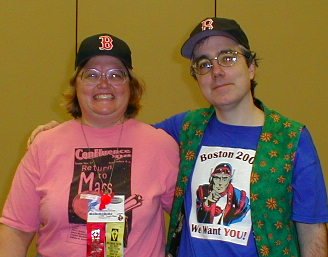The Chronicles of Narnia: The Lion, the Witch, and the Wardrobe
I was delightfully surprised. The Chronicles of Narnia, like Jaws, The Godfather, and a few other films, is one of those cases where the film is better than the book. The film captures the magic of the books, without falling into the at times what seems like childishness of the books. In the books, for example, I found Narnia’s talking beavers to be the typical talking animals of children’s books; in the film, I took them seriously as characters – both, I think, because they were shown as real beavers, and because the voice acting was quite good.
For those who don’t know the story, the first Narnia book involves four English children who are sent away to the country during World War II to remain safe. During a game of hide and seek, the youngest, Lucy, finds a room with an old wardrobe, in which she tries to hide. The wardrobe takes her to another world, Narnia, populated by talking animals and creatures from mythology and ruled by the white witch. She eventually brings her brothers and sister back with her. The younger of the brothers, Edmund, falls in with the white witch, while the other three take up with the forces of good, led by Aslan, the lion (the Christ figure of Narnia). The children take part – and in fact take a lead – in the battle against the white witch.
All of this is portrayed remarkably well on film. The script is literate, the acting uniformly good, and the sets and effects spectacular. It captures all the best of Lewis, but does so in a way that surpasses what Lewis accomplished on the page. It could perhaps have been editing down just a bit (it’s 2 hours and 10 minutes long, and probably could have been trimmed to just about 2 hours), and the music varies between very good and adequate. But overall, it was far better than I’d anticipated.
It’s on this year’s Hugo ballot. I certainly won’t vote for it first -- both Serenity and Harry Potter and the Goblet of Fire are ahead of it on my list, and Batman Begins and Wallace and Gromit are about even with it in my mind. But it’s still a film that’s worth seeing.


0 Comments:
Post a Comment
<< Home